Some trails take you to breathtaking waterfalls. Others lead you through ancient forests or across dramatic desert landscapes. Every hike tells a story, and America’s national parks are filled with trails that will make you fall in love with nature all over again. Ready to explore? Here are some of the best hikes that will leave you inspired and in awe.
1. Sentinel Dome and Taft Point Loop, Yosemite National Park, California
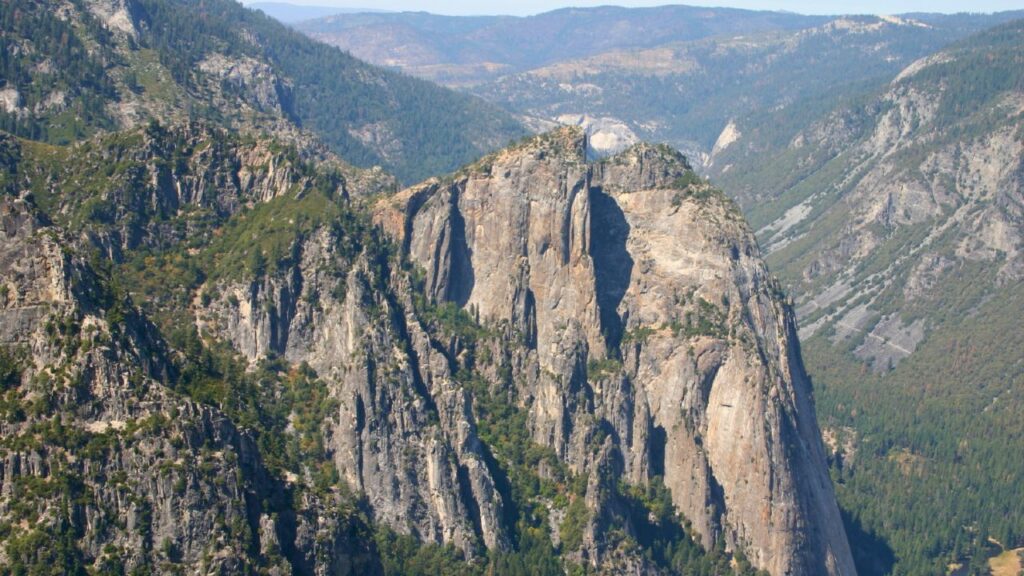
Imagine standing atop a granite dome, gazing out at a 360-degree panorama encompassing the iconic Half Dome and the vast Yosemite Valley spread beneath you. Now, picture yourself peering over a sheer cliff edge, El Capitan and Yosemite Falls commanding your attention. The Sentinel Dome and Taft Point Loop offers both these breathtaking perspectives.
- Distance: 5.1-mile loop
- Difficulty: Moderate (steepest section approaching Sentinel Dome summit)
- Elevation Gain: 1,429 ft
- Best Time: Late summer or early fall
This hike delivers two distinct, equally grand views of Yosemite’s heart. It feels less crowded than the popular Glacier Point, offering a more personal connection with the landscape. Having experienced a part of this trail on a multi-day backpacking trip, the sheer scale and beauty were simply awe-inspiring. It’s a must-do for soaking in Yosemite’s grandeur.
2. Precipice and North Ridge Trails, Acadia National Park, Maine
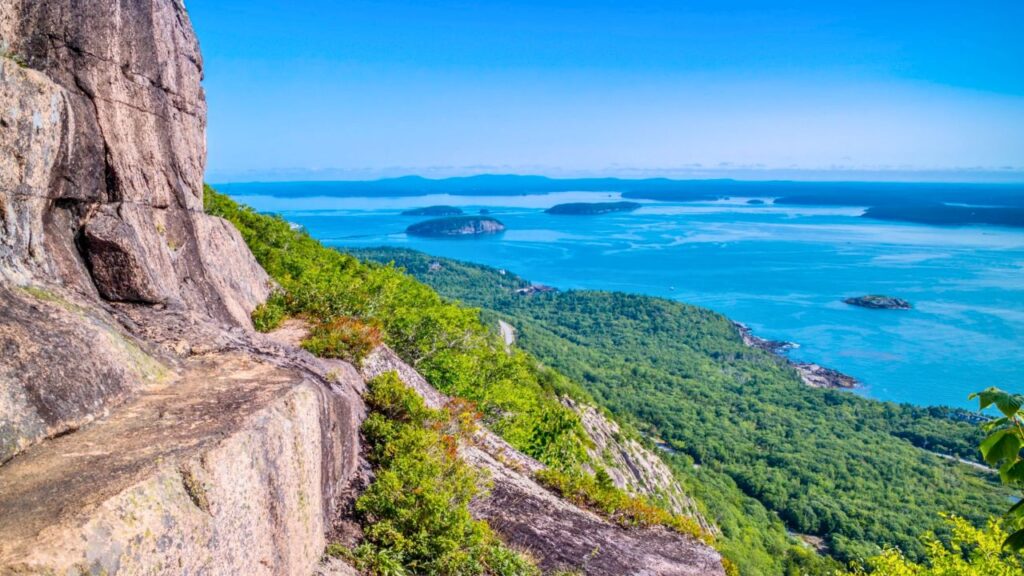
For those seeking an adrenaline rush paired with coastal beauty, Acadia’s Precipice Trail delivers. This is not a casual stroll; it’s a thrilling ascent up granite cliffs, utilizing metal rungs and ladders bolted into the rock face.
- Distance: 3.2-mile loop (including descent via North Ridge)
- Difficulty: Strenuous (climbs 1,000 feet in just 0.9 miles on Precipice)
- Elevation Gain: 1,284 ft
- Best Time: Summer or fall
The reward for this burly climb? Unparalleled views of the wild Atlantic coastline, Frenchman Bay, and the surrounding islands. Descending via the Champlain North Ridge Trail ensures the spectacular vistas continue. In autumn, the forest below transforms into a vibrant tapestry of red, orange, and yellow, making the experience even more magical.
3. Watchman Peak Trail, Crater Lake National Park, Oregon
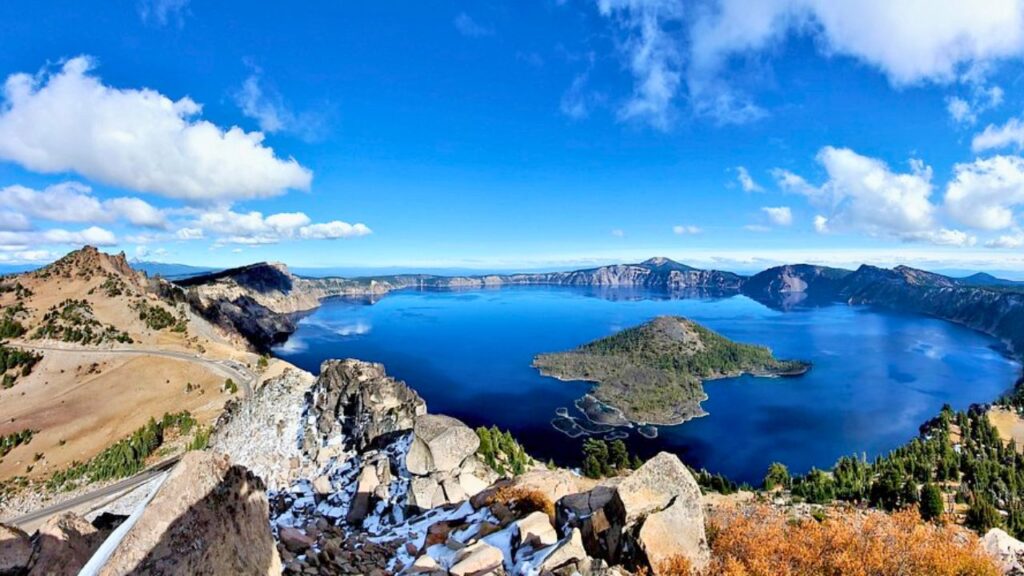
Sometimes, the most profound beauty is revealed in a relatively short distance. The hike up Watchman Peak offers arguably the best viewpoint of Crater Lake, the deepest lake in the United States, known for its stunning clarity and intense blue color.
- Distance: 1.6 miles roundtrip
- Difficulty: Moderate
- Elevation Gain: 420 ft
- Best Time: Summer and early fall
From the stone platform near the historic fire tower at the summit, the entire caldera unfolds before you. The view encompasses the iconic Wizard Island rising from the sapphire waters. It’s a relatively quick hike with an immense scenic payoff, perfect for sunset viewing.
4. Bright Angel to Plateau Point Trail, Grand Canyon National Park, Arizona
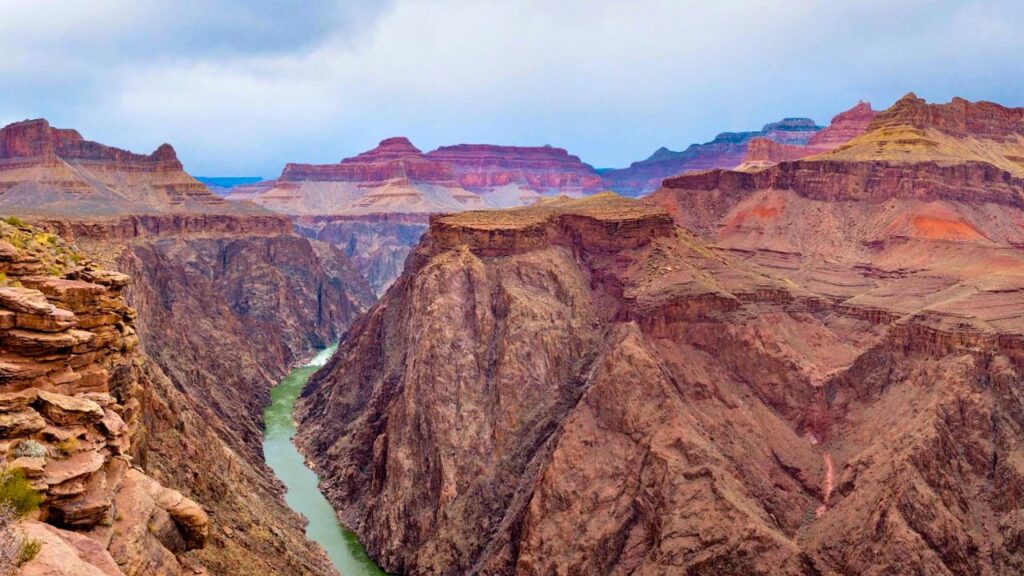
Descending into the Grand Canyon is an experience unlike any other. The Bright Angel Trail offers a challenging but immensely rewarding journey below the rim, culminating in a jaw-dropping vista at Plateau Point.
- Distance: 12 miles out and back
- Difficulty: Strenuous (significant elevation change)
- Elevation Gain: 3,200 ft descent/ascent
- Best Time: Spring and fall (avoid summer heat)
As you hike deeper, the canyon walls reveal intricate layers of geologic history. You’ll pass through the surprisingly lush oasis of Havasupai Gardens (formerly Indian Garden). The ultimate goal, Plateau Point, sits perched on the Tonto Plateau, offering a staggering view nearly 2,000 feet directly above the mighty Colorado River. Recalling a hike of the full Bright Angel trail years ago, it remains one of the most physically demanding yet profoundly beautiful treks ever undertaken – a true test and reward.
5. Forney Ridge Trail to Andrews Bald, Great Smoky Mountains National Park, NC/TN
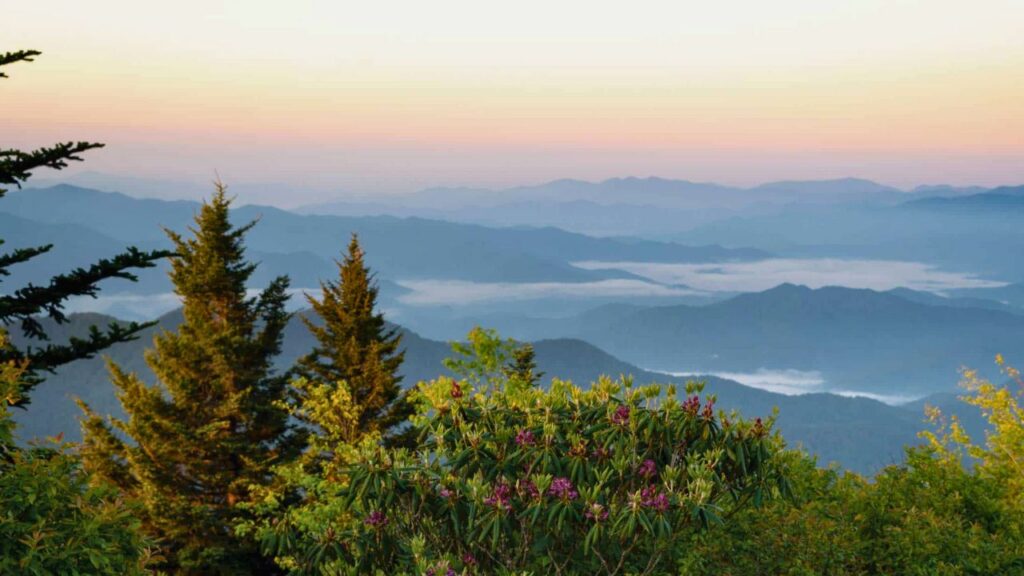
Escape the crowds and discover a high-elevation grassy bald with panoramic mountain views in the Great Smokies. Andrews Bald offers a peaceful respite and stunning vistas, accessed via the Forney Ridge Trail starting near Clingmans Dome.
- Distance: 3.6 miles out and back
- Difficulty: Moderate
- Best Time: June/early July for peak azalea and rhododendron blooms; Fall for foliage.
The trail winds through a cool, high-elevation forest before opening onto the expansive bald. From here, you can gaze out at long-range views of the southern mountains within the park and Fontana Lake shimmering in the distance. Often, you might find you have this incredible spot all to yourself, which is always an amazing feeling amidst the park’s popularity. It’s particularly spectacular in early summer when flame azaleas and Catawba rhododendrons paint the bald in vibrant colors.
6. High Dune Trail, Great Sand Dunes National Park and Preserve, Colorado
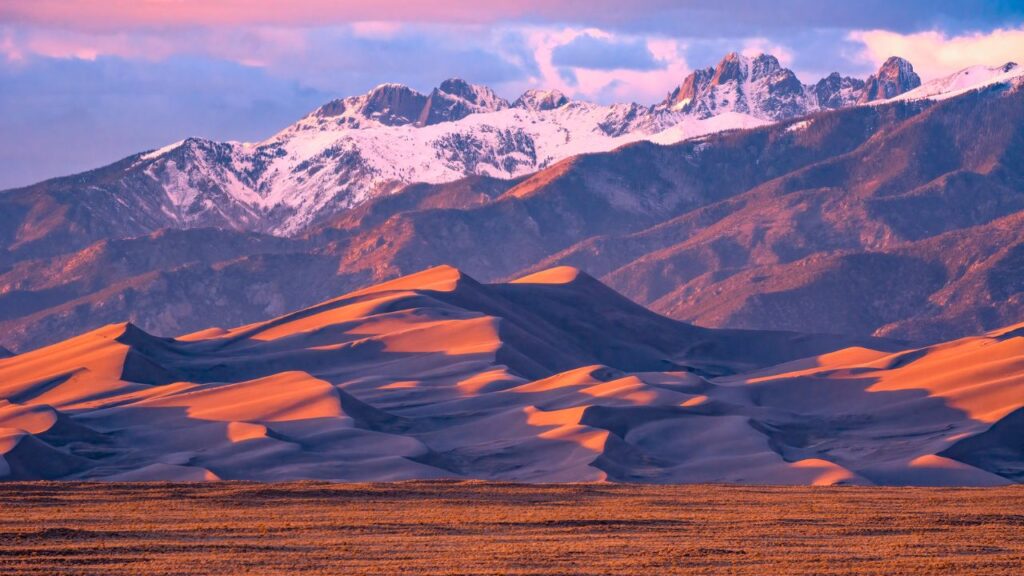
Hiking on sand offers a unique challenge and perspective. Ascending High Dune, one of the tallest dunes in North America, provides an otherworldly experience surrounded by a vast sea of sand set against the dramatic backdrop of the Sangre de Cristo Mountains.
- Distance: ~2.5 miles out and back (route varies on sand)
- Difficulty: Moderate to Strenuous (hiking on loose sand is tiring)
- Best Time: Spring or Fall (cooler temperatures); Early morning or late evening to avoid hot sand.
There isn’t one set trail; you pick your path up the ridges. In late spring and early summer, the adventure begins with wading across the seasonal Medano Creek. Reaching the summit rewards you with incredible 360-degree views of the dune field stretching out below, framed by rugged 13,000-foot peaks. It feels like stepping onto another planet.
7. Mesa Arch Trail, Canyonlands National Park, Utah
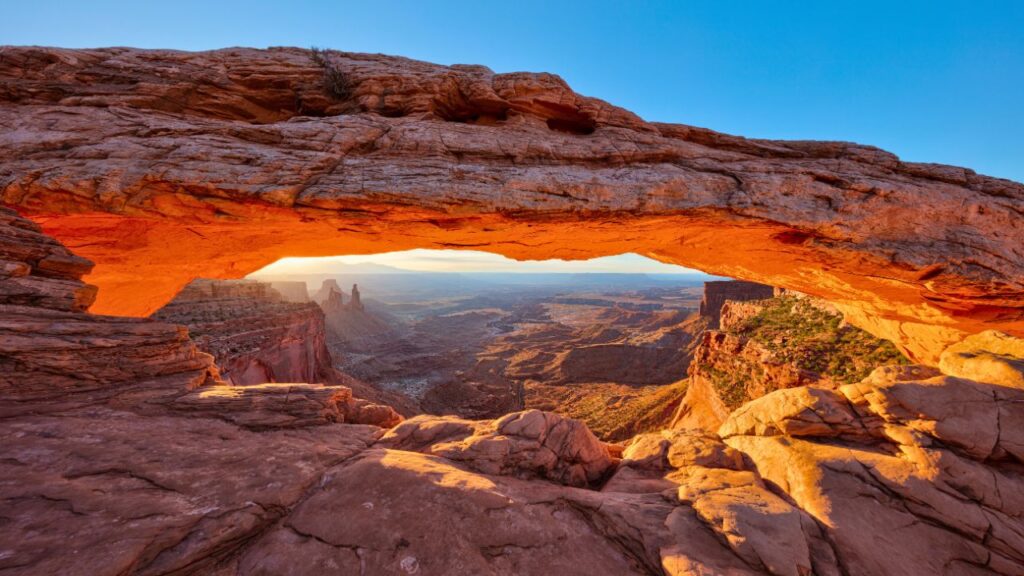
Proof that epic views don’t always require epic mileage, the Mesa Arch Trail is a short, easy loop leading to one of the most photographed spots in the Southwest.
- Distance: 0.7-mile loop
- Difficulty: Easy
- Best Time: Sunrise (for the classic shot); anytime for great views.
This iconic arch perfectly frames the dramatic landscape of Buck Canyon below, with the La Sal Mountains visible in the distance. It’s an incredibly accessible hike, suitable for almost everyone. We even took our four-year-old twins on this trail, and watching their faces light up at the view through the arch was unforgettable. It’s especially famous for sunrise, when the underside of the arch glows fiery orange, but the vista is stunning at any time of day.
8. Highline Trail, Glacier National Park, Montana
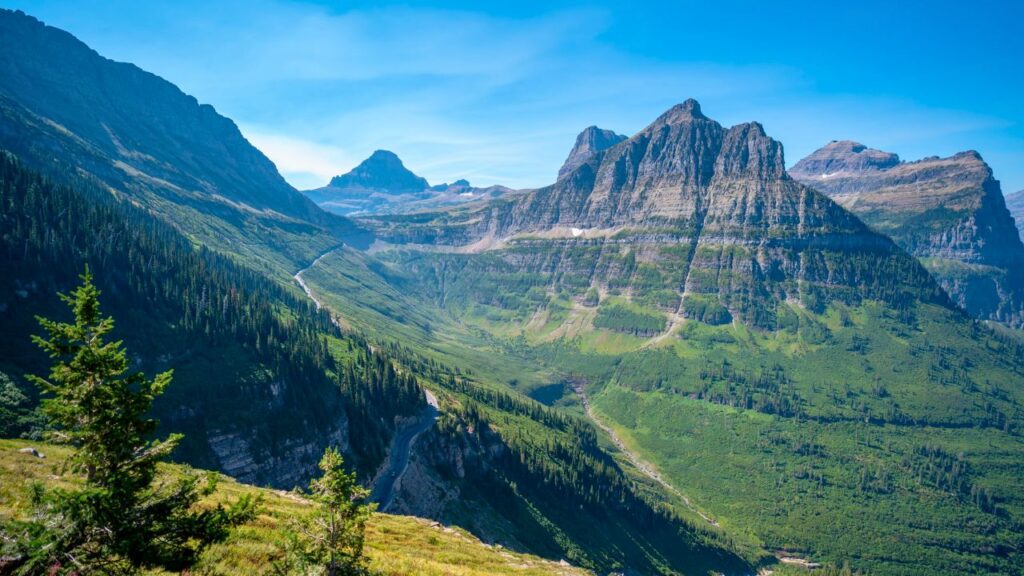
Often hailed as one of the most spectacular hikes in the world, Glacier’s Highline Trail is an adventure carved into the mountainside, offering relentless, jaw-dropping scenery along the Continental Divide.
- Distance: 12 miles one-way (typically Logan Pass to The Loop, shuttle required)
- Difficulty: Moderate to Strenuous (long distance, exposure)
- Best Time: Mid-July to mid-September (snow-dependent)
Starting from Logan Pass, the trail immediately traverses a narrow ledge blasted into the cliff face (with a hand cable for security), high above the Going-to-the-Sun Road. Views of Mt. Cannon, Mt. Oberlin, and Heavens Peak dominate the western skyline. As you climb towards Haystack Pass and descend towards Granite Park Chalet, the views only get deeper and more expansive. The section known as the Garden Wall bursts with wildflowers in mid-summer, passing through lush meadows and pocket forests, often with chances to spot wildlife like mountain goats and bighorn sheep.
9. Sky Pond via Glacier Gorge Trail, Rocky Mountain National Park, Colorado
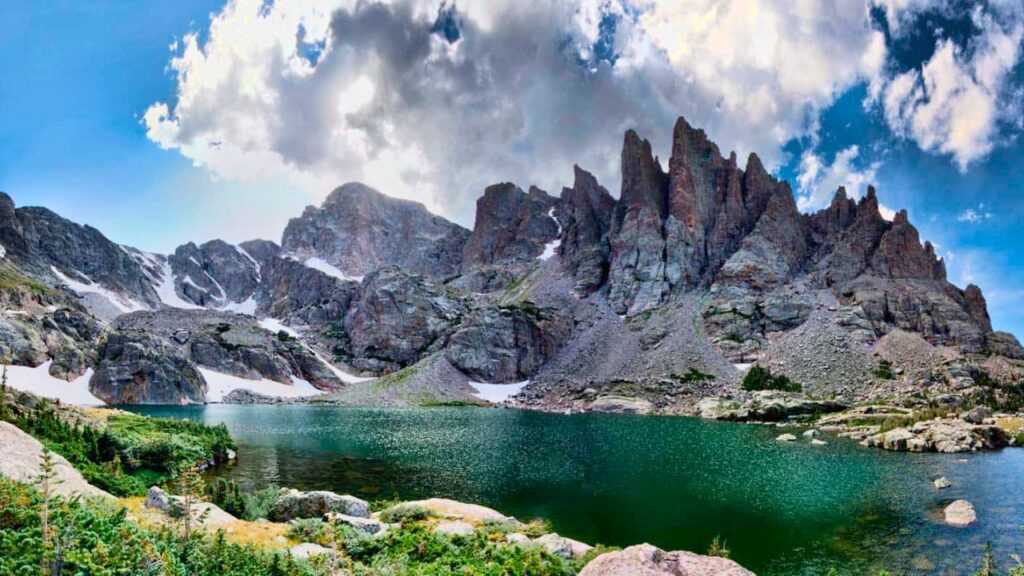
For a quintessential Rocky Mountain alpine lake experience, the hike to Sky Pond is hard to beat. It’s a challenging journey that rewards hikers with stunning waterfalls, beautiful lakes, and a dramatic final destination nestled in a granite cirque.
- Distance: 8.5 miles out and back
- Difficulty: Strenuous
- Elevation Gain: 2,007 ft
- Best Time: Summer or early fall
The trail leads past the impressive 30-foot Alberta Falls early on, then continues through forests and along the shores of the picturesque Loch Vale. The final push involves scrambling up alongside the cascading Timberline Falls to reach the serene Lake of Glass. Just beyond lies Sky Pond, cradled by sheer granite cliffs known as the Cathedral Spires. The feeling of remoteness and the pristine beauty of the lake perfectly mirroring its rugged surroundings make the strenuous effort entirely worthwhile.
10. Harding Icefield Trail, Kenai Fjords National Park, Alaska
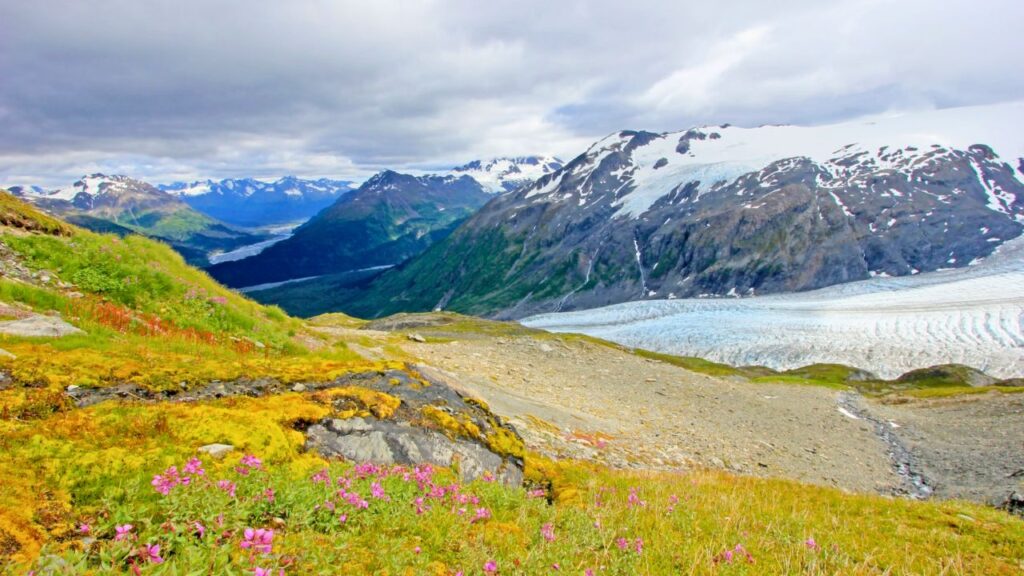
(Note: Details like distance and difficulty were not available in the provided source information for this specific hike.)
While specifics were limited in the source, the Harding Icefield Trail is renowned for offering one of the most accessible ways to glimpse the vast, ancient world of glacial ice in Alaska. This strenuous trail climbs steeply from the valley floor alongside Exit Glacier, eventually emerging onto a breathtaking viewpoint overlooking the Harding Icefield – an enormous expanse of ice stretching over 700 square miles, the source of nearly 40 glaciers. The contrast between the lush valley forest and the stark, icy landscape above is dramatic and unforgettable.
11. Rialto Beach to Hole-in-the-Wall, Olympic National Park, Washington
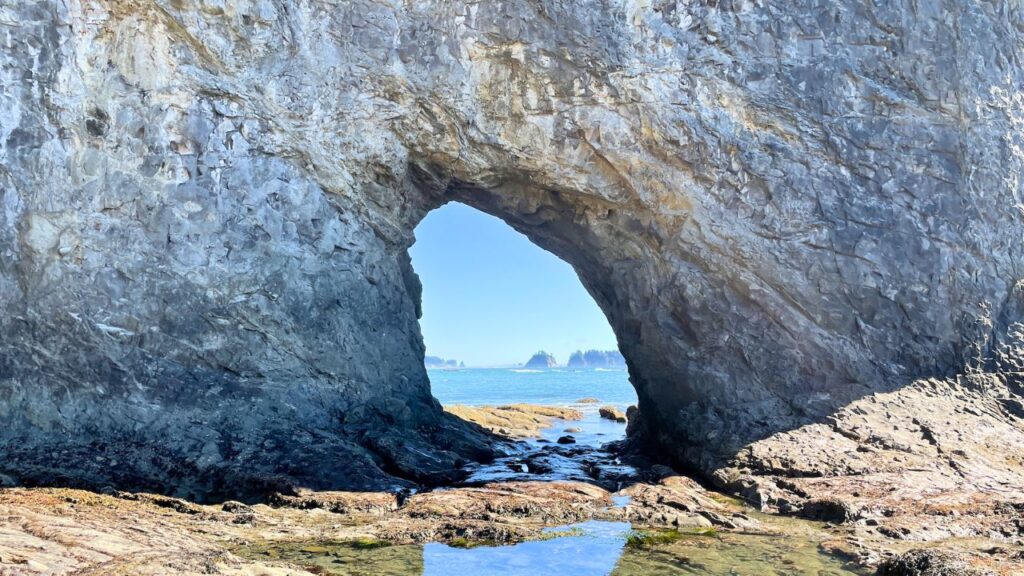
Experience the rugged, wild beauty of the Pacific Northwest coast with a beach walk along Rialto Beach. This isn’t your typical sandy stroll; it’s an exploration of a dramatic shoreline where the forest meets the sea.
- Distance: ~3 miles roundtrip to Hole-in-the-Wall
- Difficulty: Easy to Moderate (walking on sand/pebbles, potential scrambling)
- Best Time: Year-round; low tide is essential for exploring Hole-in-the-Wall.
Walk north along the black sand and pebble beach, strewn with massive driftwood logs bleached white by sun and salt. Impressive sea stacks rise dramatically from the surf just offshore. The goal for many is Hole-in-the-Wall, a sea arch carved into a headland. If you time your visit for low tide, you can walk through the arch and explore the vibrant tide pools teeming with life on the other side. There’s also an option to scramble up a primitive trail on the forested bluff for panoramic views south along the captivating coastline.
These trails represent just a fraction of the incredible hiking opportunities within America’s national parks. Each step taken on these paths connects you to the wild heart of these protected landscapes, offering moments of challenge, beauty, and profound connection with nature. So, which adventure will you choose next?

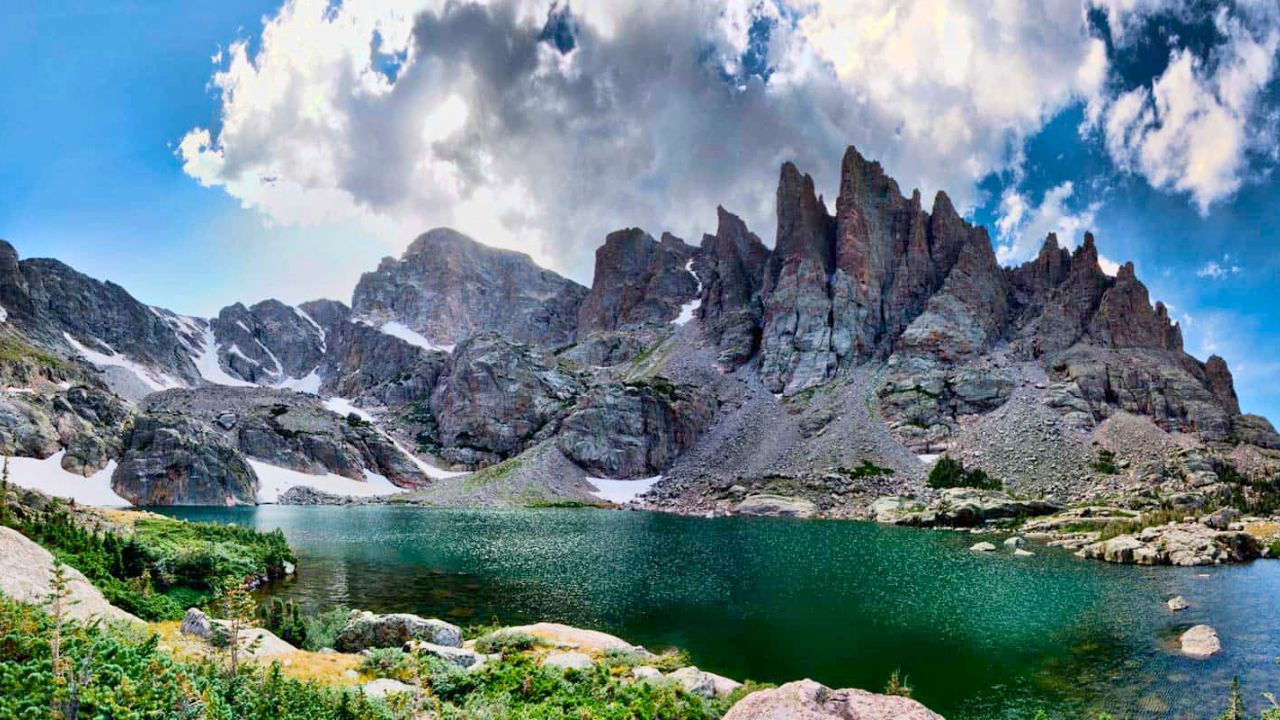
Leave a Reply